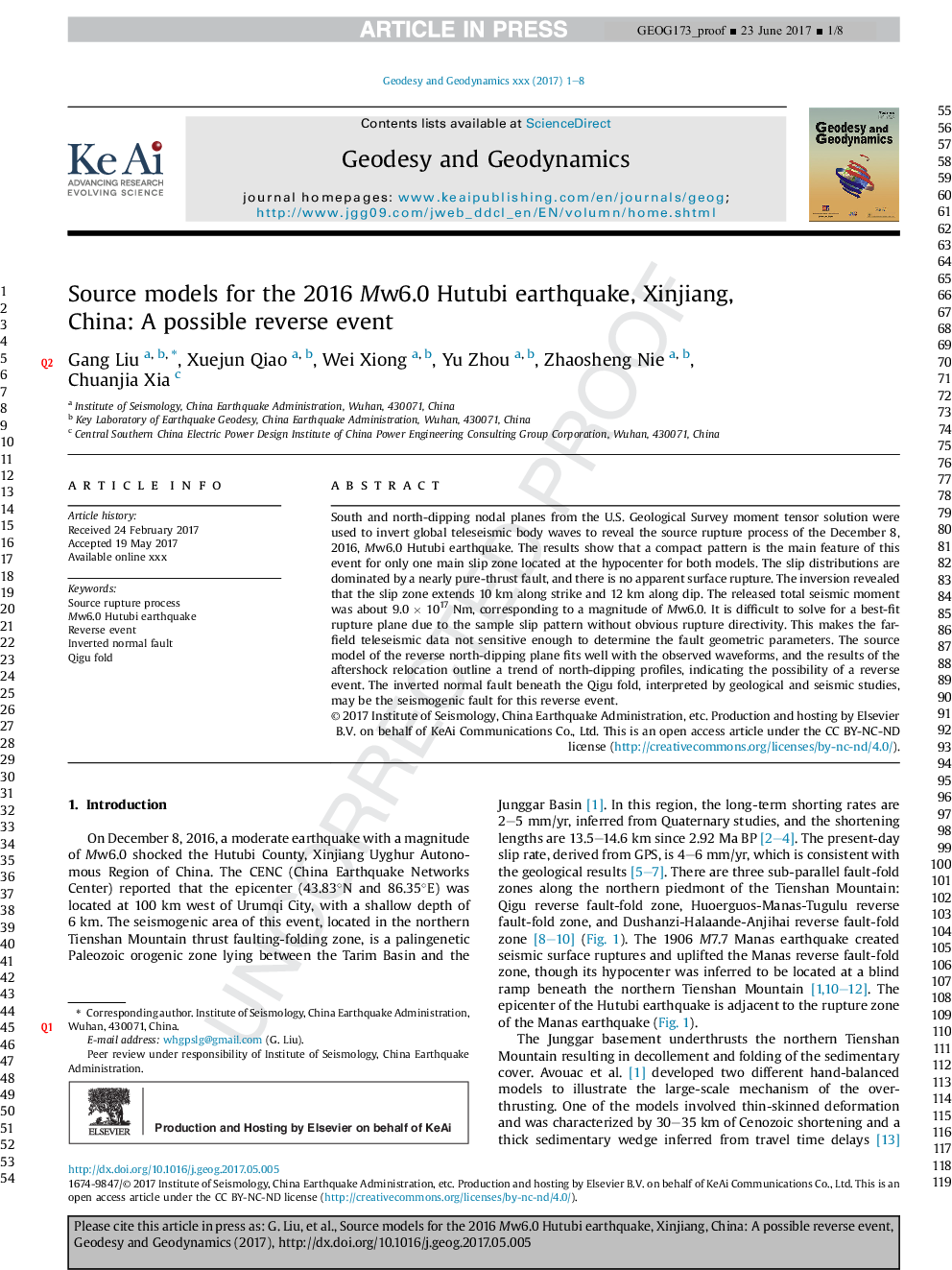| Article ID | Journal | Published Year | Pages | File Type |
|---|---|---|---|---|
| 5780612 | Geodesy and Geodynamics | 2017 | 8 Pages |
Abstract
South and north-dipping nodal planes from the U.S. Geological Survey moment tensor solution were used to invert global teleseismic body waves to reveal the source rupture process of the December 8, 2016, Mw6.0 Hutubi earthquake. The results show that a compact pattern is the main feature of this event for only one main slip zone located at the hypocenter for both models. The slip distributions are dominated by a nearly pure-thrust fault, and there is no apparent surface rupture. The inversion revealed that the slip zone extends 10Â km along strike and 12Â km along dip. The released total seismic moment was about 9.0Â ÃÂ 1017Â Nm, corresponding to a magnitude of Mw6.0. It is difficult to solve for a best-fit rupture plane due to the sample slip pattern without obvious rupture directivity. This makes the far-field teleseismic data not sensitive enough to determine the fault geometric parameters. The source model of the reverse north-dipping plane fits well with the observed waveforms, and the results of the aftershock relocation outline a trend of north-dipping profiles, indicating the possibility of a reverse event. The inverted normal fault beneath the Qigu fold, interpreted by geological and seismic studies, may be the seismogenic fault for this reverse event.
Keywords
Related Topics
Physical Sciences and Engineering
Earth and Planetary Sciences
Earth-Surface Processes
Authors
Gang Liu, Xuejun Qiao, Wei Xiong, Yu Zhou, Zhaosheng Nie, Chuanjia Xia,
